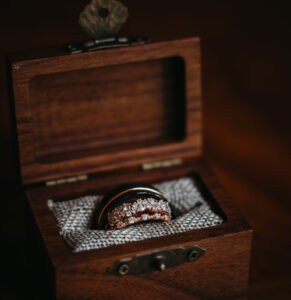
In South Africa, gold is not just something you find on a ring finger or locked in a vault, it’s a quiet thread stitched into family histories, passed from hand to hand, generation to generation. When someone speaks about “the weight of 24 carats,” it’s not always about price or purity, it’s about legacy. It’s about the bangle a grandmother wore through decades of weddings and funerals. The chain a father gave his son as a silent gesture after a first big job. The earrings bought as a way to mark survival, to say: we made it, despite everything.
If you’ve walked through Johannesburg’s Oriental Plaza or the tightly packed shops along Durban’s Grey Street, you’ll have seen it, gold displayed in windows, catching the light like small suns. But behind the gloss, there’s something quieter happening. Families aren’t just buying jewellery for show, they’re investing in continuity. In a country where financial systems have often failed ordinary people, gold has remained a form of trust you can touch.
Across different communities, Indian, Zulu, Tswana, Cape Malay, you’ll hear similar stories. A thin wedding band that’s travelled from grandmother to granddaughter. Chains that used to circle necks in wedding photos now strung around toddlers, sitting awkwardly on tiny chests. What’s unique in South Africa is that this practice cuts across both wealth brackets and cultural lines. It doesn’t matter whether you’re buying a ten-gram bangle or a solid gold necklace weighing in at 50 grams. The meaning is the same.
Ask most jewellers in the country and they’ll tell you, people often come not to shop, but to repair. Bent bracelets, snapped chains, broken clasps from pieces that have been worn for decades. And they aren’t always looking for a pristine fix. A visible solder mark, a slight difference in colour, these aren’t seen as flaws. They’re part of the story. Each scratch, each dent is another layer in the history.
For many families, gold acts as a form of informal banking. When times get tough, pieces can be pawned, sold, melted down. And yet, there’s often a line that doesn’t get crossed. People will sell televisions, even cars, before letting go of family jewellery. Because once a bangle that belonged to your great-grandmother is gone, there’s no buying it back. It’s not just about owning gold, it’s about knowing where it came from, and what it’s been through alongside you.
This practice isn’t static either. Younger generations are finding ways to keep it alive, but with their own twist. Instead of sticking to traditional designs, they commission modern pieces using inherited gold. An old bracelet becomes a pendant. Wedding rings get re-cast into new shapes. There’s a quiet negotiation happening, between respecting the past and living in the now.
 You see this most vividly during weddings and other rites of passage. In some communities, it’s not just about the dowry or lobola, it’s about the jewellery presented. Gold isn’t bought to impress guests, it’s bought to show love, endurance, and the hope that one day, someone younger will inherit it.
You see this most vividly during weddings and other rites of passage. In some communities, it’s not just about the dowry or lobola, it’s about the jewellery presented. Gold isn’t bought to impress guests, it’s bought to show love, endurance, and the hope that one day, someone younger will inherit it.
And while the urban centres still dominate the formal jewellery trade, there’s a vast parallel market too, craftspeople working from home workshops in townships or rural villages, shaping raw gold into pieces far removed from the mall displays. These artisans work with techniques passed down through families, sometimes without formal training, just the steady guidance of a parent or uncle.
Gold’s physical weight isn’t what lingers with people, it’s the emotional one. Wearing a gold chain bought decades ago by someone long gone is like carrying a silent message. A reminder that things survive. Through loss, through celebration, through eras where gold mines thrived and others when they closed, that shimmer continues.
South Africa’s relationship with gold is deeply political and economic, it shaped its history, its labour struggles, its wealth divide. But at street level, at home level, it’s also intimate. It’s less about what gold is worth on the market that day, and more about what it’s worth in memory.
And as families gather for weddings, funerals, and birthdays, you’ll notice those quiet glints, a thick bangle half-hidden under a sleeve, a pair of earrings catching sun between braids. These are not just accessories. They’re proof of stories that continue, quieter than headlines but just as enduring.



